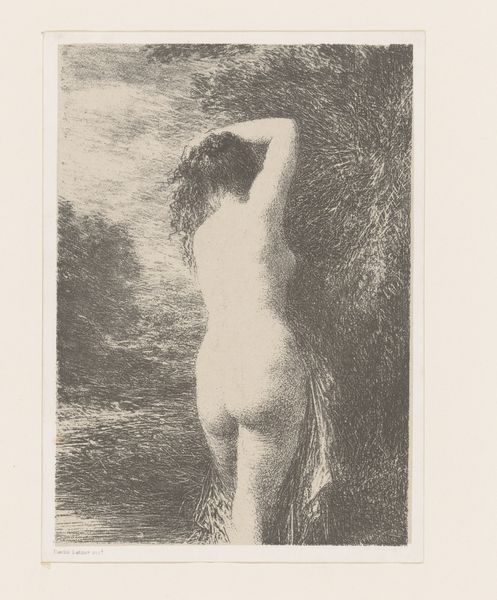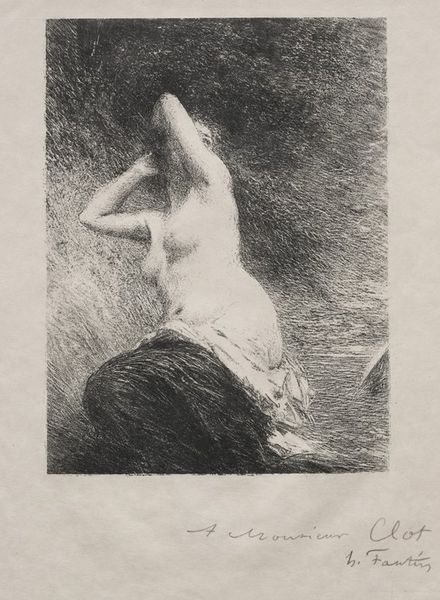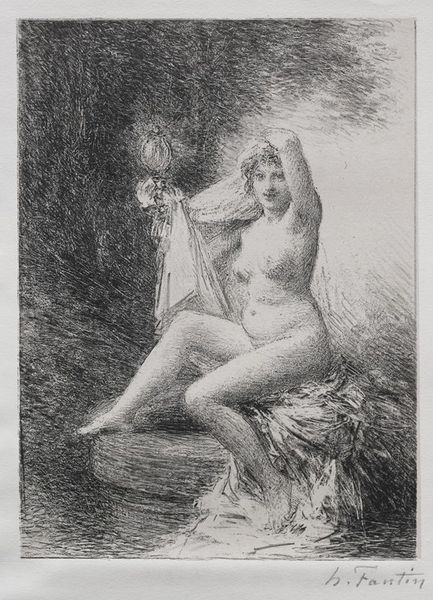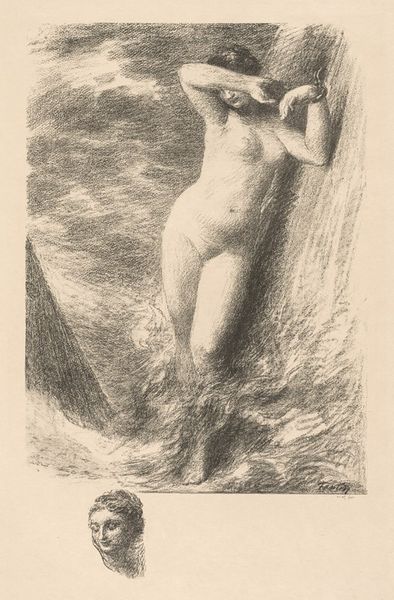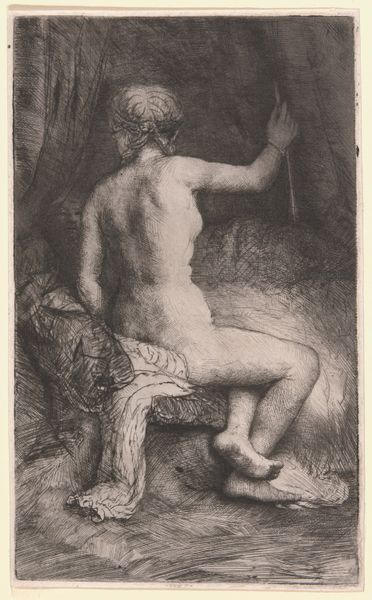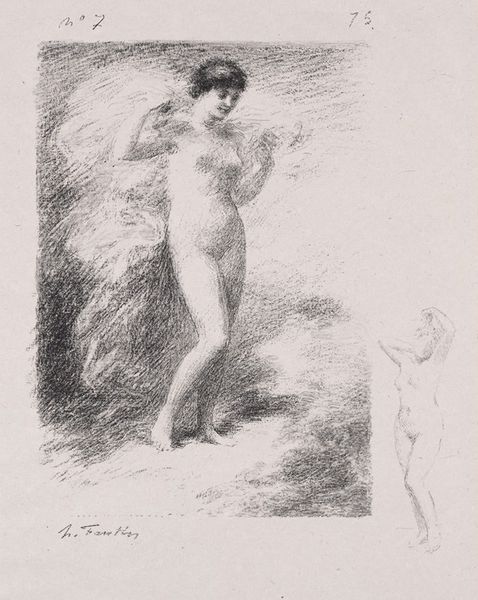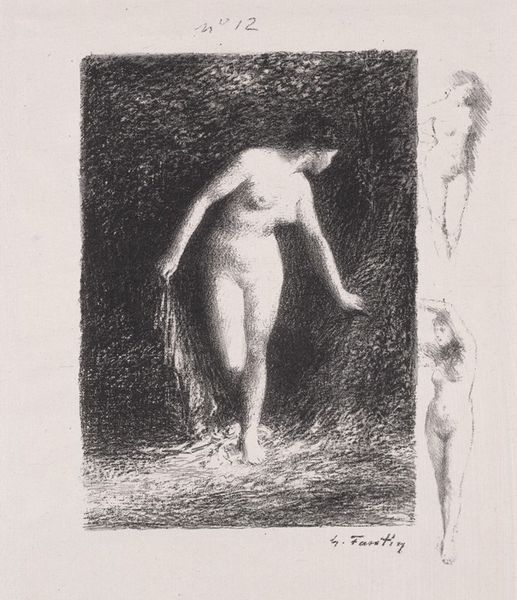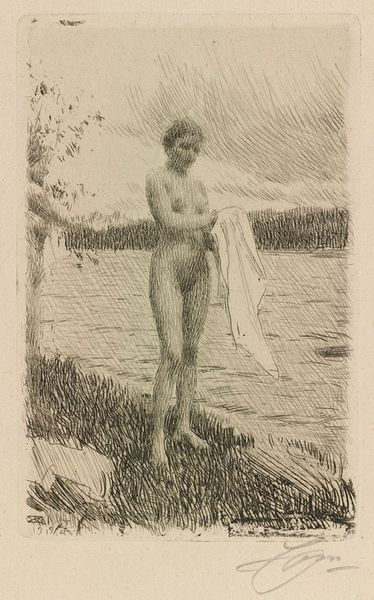
Copyright: Public Domain: Artvee
Curator: The way the light glances across this figure reminds me of the pre-Raphaelites. Before us is Henri Fantin-Latour’s "Bather Standing," a pencil and charcoal drawing rendered in 1899. Editor: Immediately, I’m struck by the figure's vulnerability and anonymity. We see her from the back, the setting rendered as a haze around her, it evokes both intimacy and distance simultaneously. There is a softness, even a shy quality to the posture and blurred lines. Curator: Indeed. It resonates with similar artistic explorations that interrogated female representation in the late 19th century. We should recognize the nuances, even in its subtlest details. Does this nude celebrate the subject or subtly objectify the woman? The female body had become, at the turn of the century, both fetishized and repressed within the societal confines. The drawing serves as an important piece of social commentary for that reason. Editor: The artist shrouds the woman in an atmosphere of private contemplation, an Arcadian vision tinged with the somber tones. I think she seems poised, vulnerable yes, but self-possessed. She evokes similar nudes within mythology or those found within allegorical illustrations. What meaning might be attached to these themes or signs of self-possession and autonomy? Curator: Good point. We must explore how cultural and patriarchal structures have coded certain postures and artistic poses of female figures throughout art history. We also need to confront the artist's personal positioning. What intentions informed Fantin-Latour's rendering of the female nude and the symbolic context with women in French society? The art might reflect or critique its period and social context. Editor: It strikes me how effectively the visual weight rests in her connection with the setting behind her. See how her form practically blends into nature around her. Here the symbol transcends the figure herself, drawing a link with archetypes of woman as source and guardian, much in the vein of certain earth mother goddesses. The effect creates a sense of something constant, eternal. Curator: Perhaps looking deeper we may ask whether its traditional composition obscures more radical potential for gender representation. Considering his choices around that period, is Fantin-Latour ultimately perpetuating norms around how women are presented visually within society? Editor: It leaves me with much to ponder regarding our eternal bonds with nature. Curator: And to challenge perspectives on the evolving position of women within artistic and social landscapes.
Comments
No comments
Be the first to comment and join the conversation on the ultimate creative platform.
